The Humber
Room
Service Design

Project background
The Humber Room is Humber College’s campus restaurant, designing as a learning space for students in event management, hospitality and culinary arts. Acting as a simulation lab, these students use the space to gain practical experience working in a restaurant and venue area. Our goal was to improve the restaurant service as both a simulation lab and a campus restaurant, through an ethnographic lens.
Team and role
Initially, I collaborated in a group of six designers. We planned and performed a service audit together, before focusing on our respective areas of the restaurant’s services. We split into two groups for co-creation workshops to ideate potential solutions towards our problem spaces.
Challenges and objectives
Performing a service audit highlighted a set of challenges within this space that allowed us to narrow down our scope:
1. Use of Environment/Space
Understanding how the restaurant itself plays a pivotal role in how students operate in the space, and how customers are served.
2. Student Engagement
Solidifying approaches to tasks within the student roles that promote learning engagement within the space.
3. Harmonization of Service Interactions
Connecting touchpoints between the customer, the front of house and the back of house to improve the restaurant experience.
Project outcomes
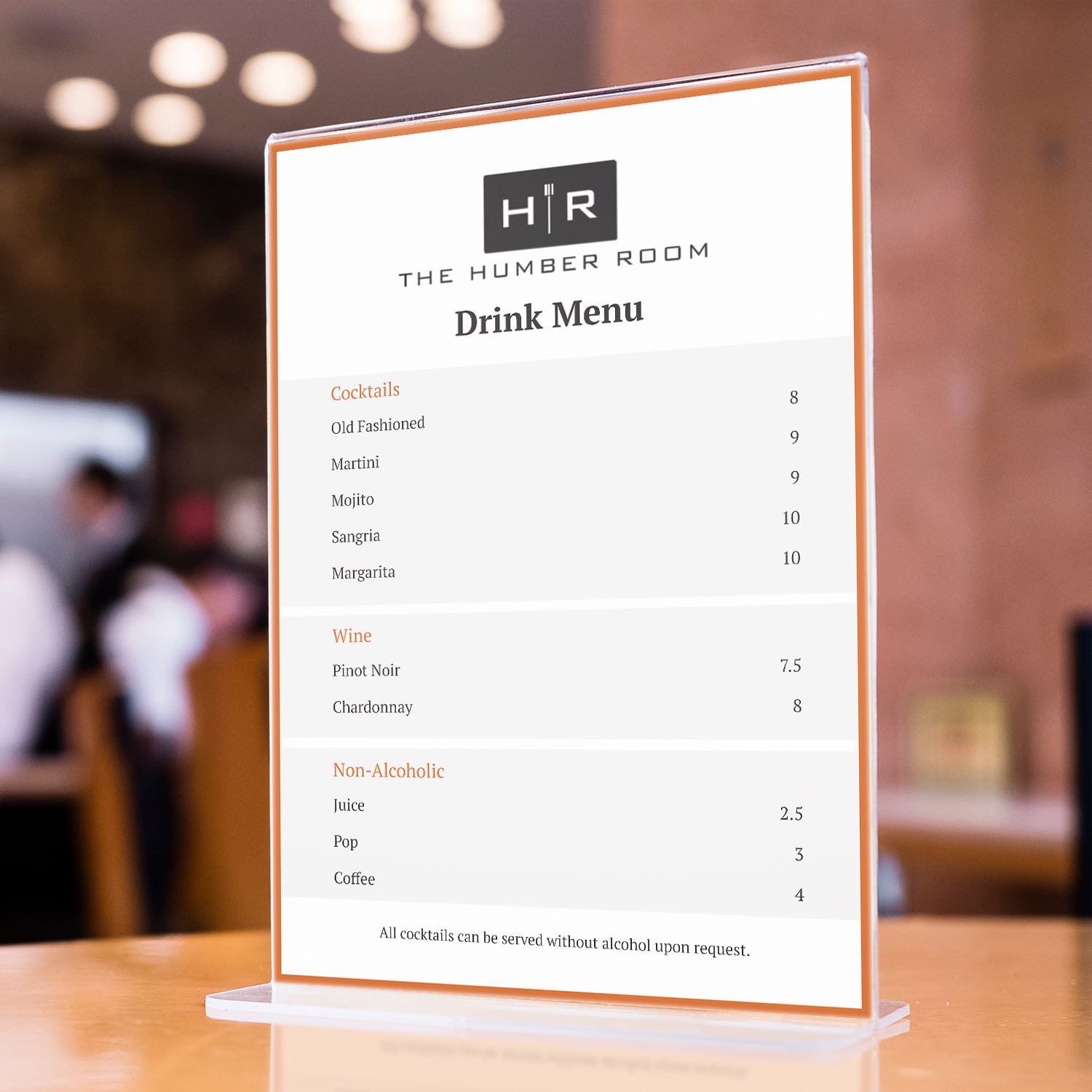

Behind the design
Achieving these final results was a journey shaped by continuous research, user insights, and iterative design. From understanding first-time car buyers' challenges to refining solutions that would truly meet their needs, each step brought me closer to the final design. In the following sections, I'll walk through the key phases that informed my approach and brought this concept to life.
The site visit
Starting off this journey was the opportunity for us to visit the service space. We met with the Associate Dean of the restaurant’s cluster of programs, who gave us some of his time to talk about what the Humber Room is all about as well as giving us a tour of the usable space.
Outside of this visit, members of our group took part in a lunch visit at the restaurant to experience the service from a customer standpoint. These visits allowed us to identify aspects of the service that can potentially be changed or improved:
︎︎︎ Booking & Reservation systems
︎︎︎ Customer Feedback
︎︎︎ Drinks & Bar (my area of focus)
︎︎︎ Menus
︎︎︎ Student Experience


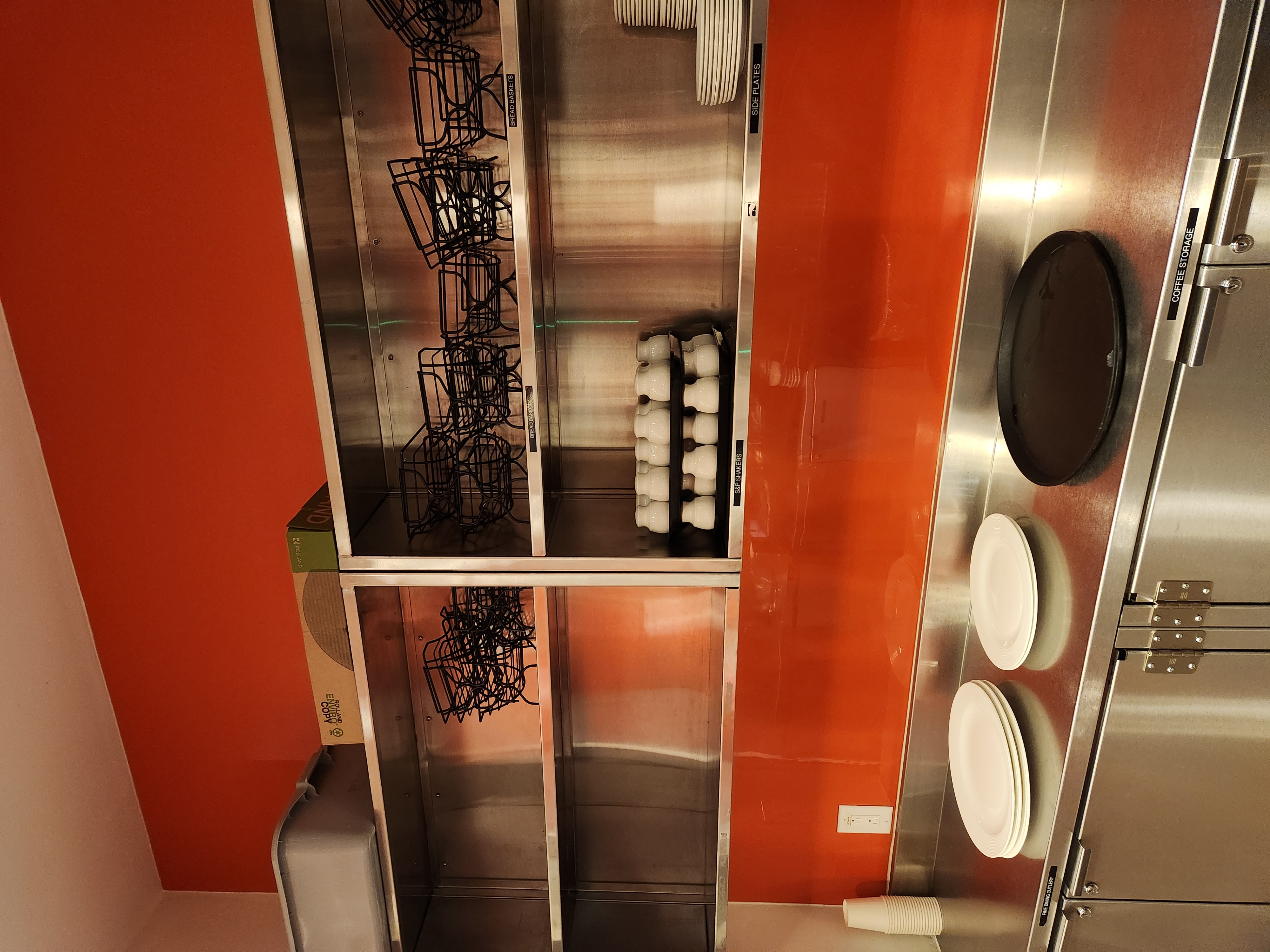



Understanding the service space
A stakeholder map was created to plot out the occupation of roles in the service ecosystem. Since this space is unique, and not just a regular restaurant, we included the internal structure that involves providing a curriculum to students that use this space to learn their trade. This helps us understand how operations behind the scenes lead to providing the customer the service experience they are looking for.
Personas

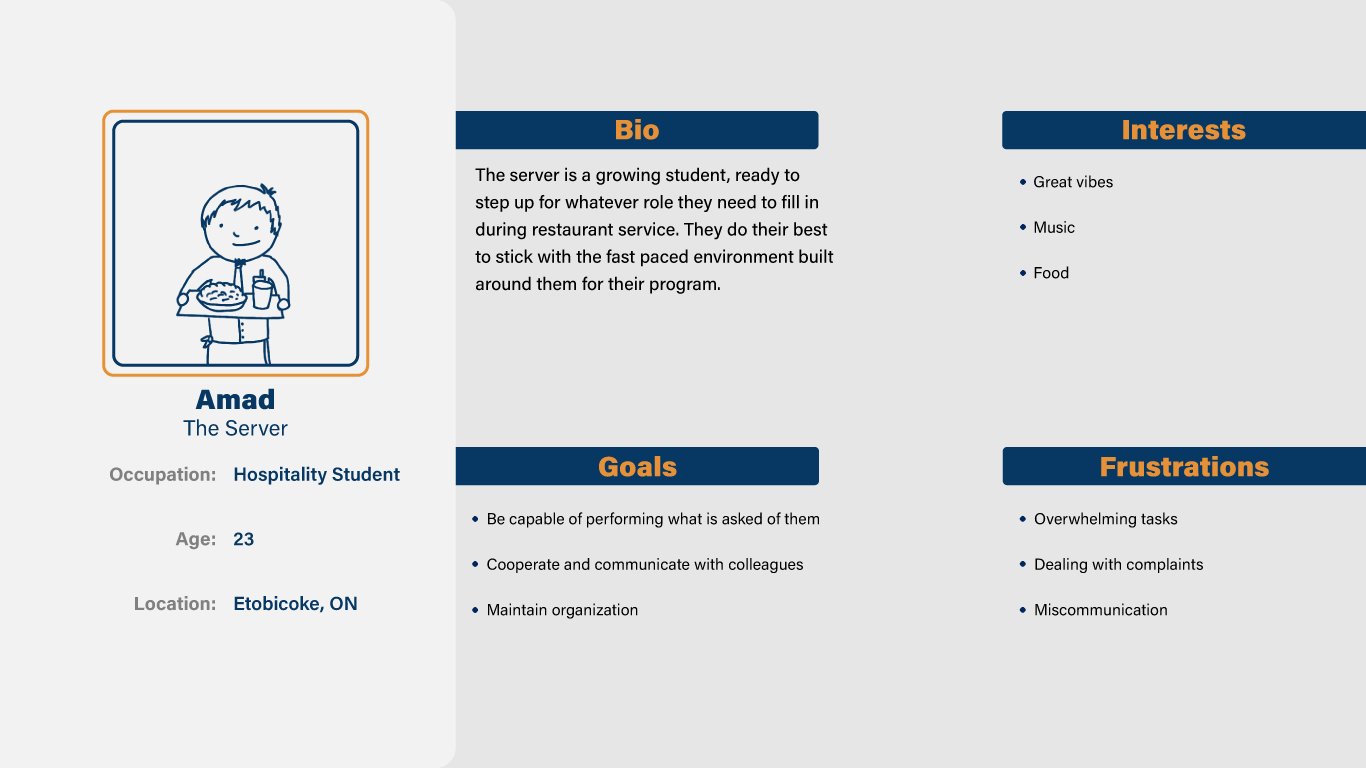

Journey maps
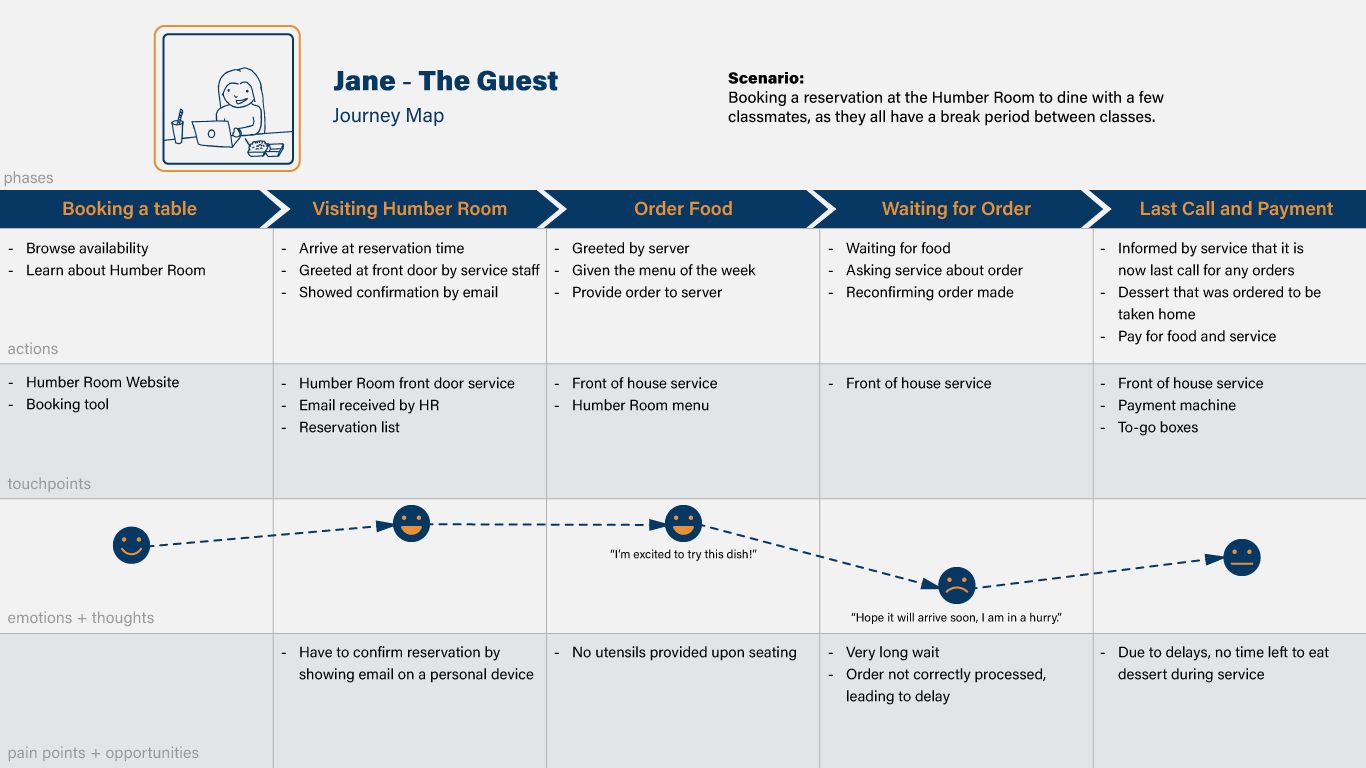

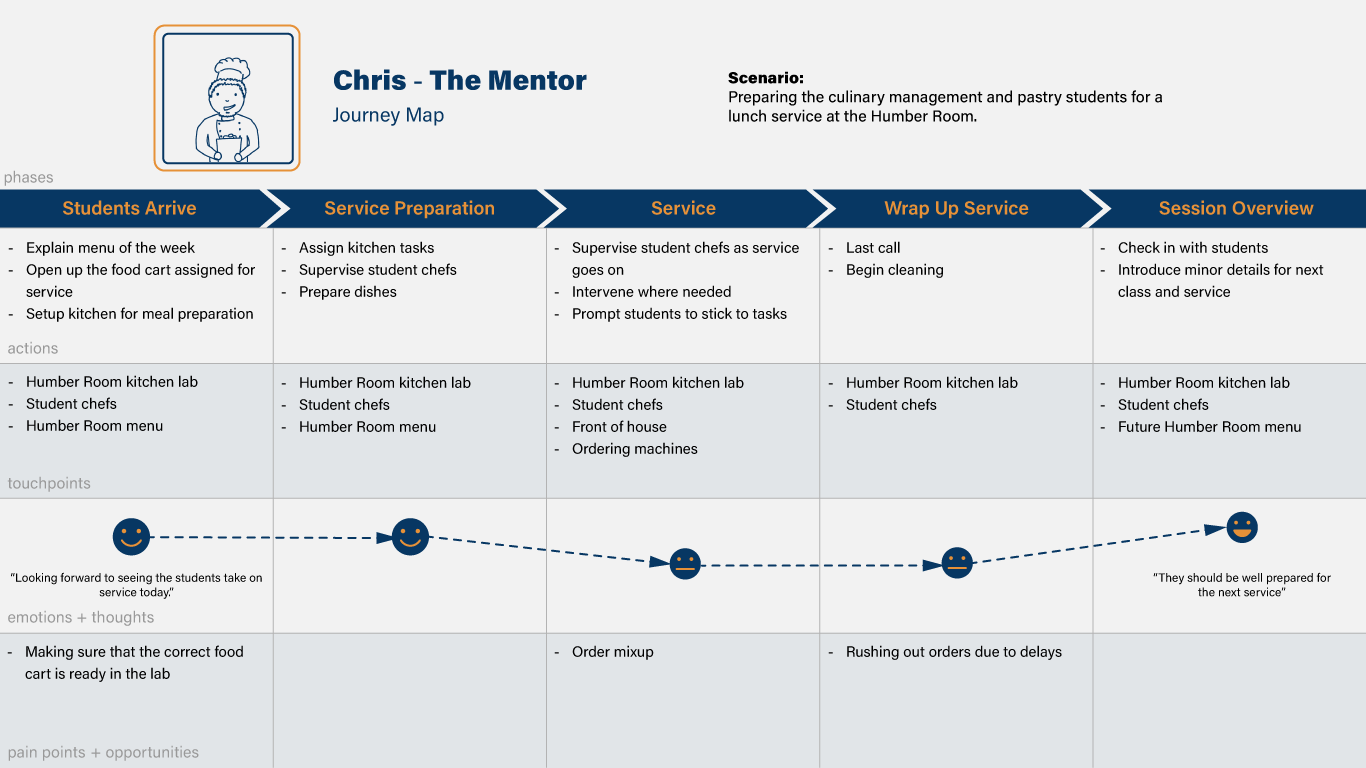
Co-creation workshop
Shifting focus towards the drinks & bar related aspects of the service, I ran a co-creation workshop with some of my colleagues where we explored ideas surrounding the bar’s role in the service ecosystem.







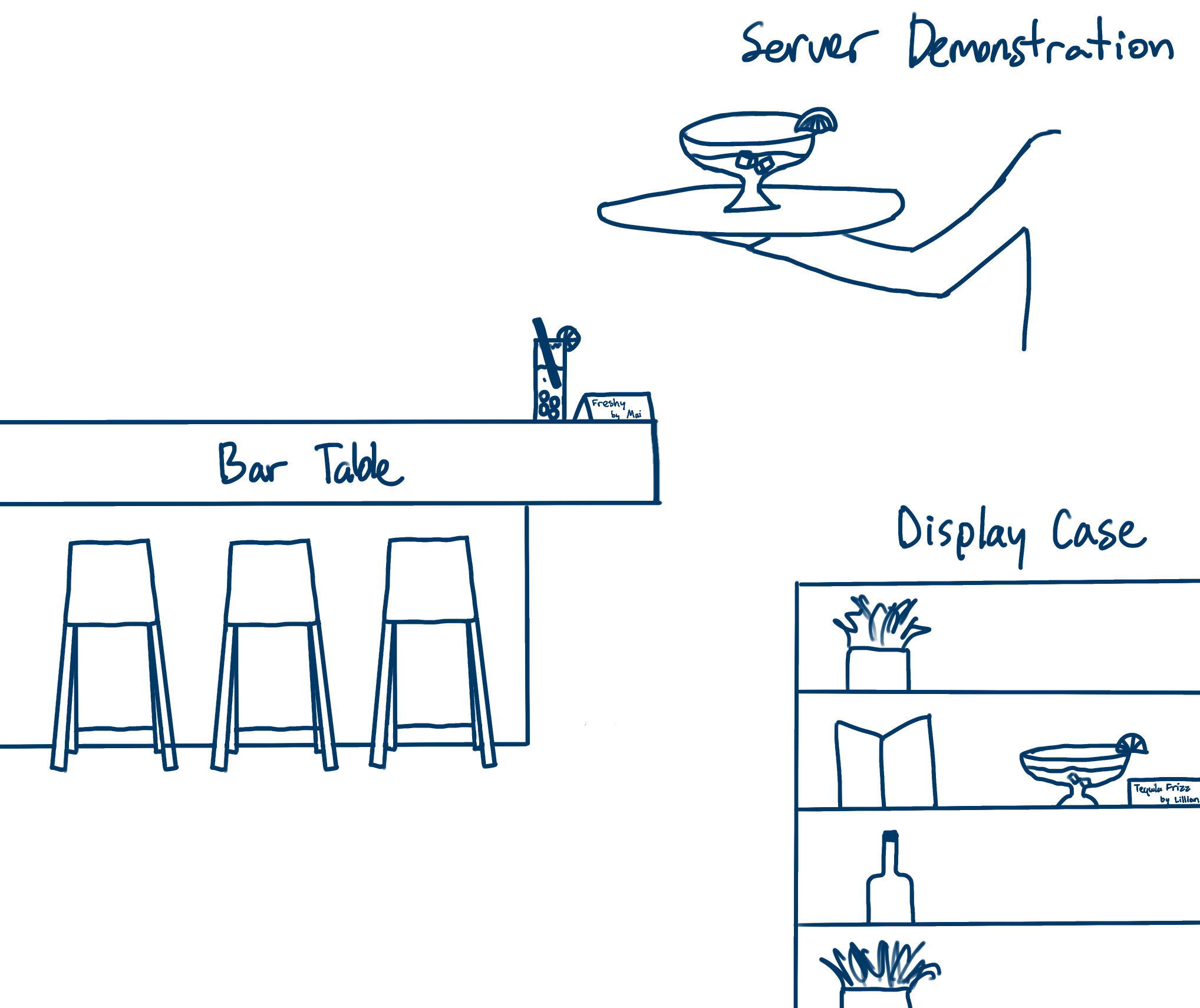
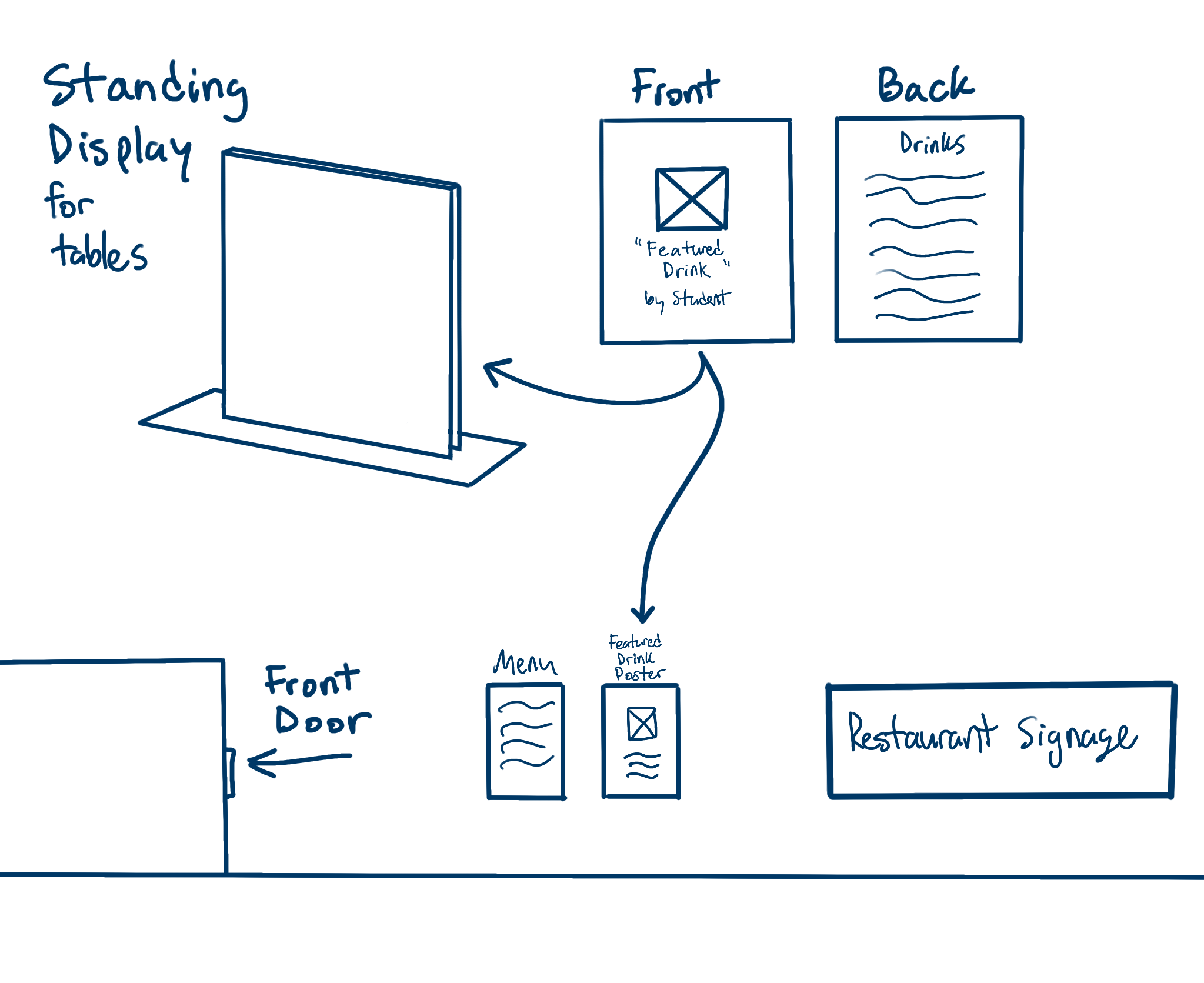
Prototype implementation
Following the workshop, I compiled the results into solutions that will help in increasing what the bar has to offer to front of house students and restaurant guests. Since this restaurant is unique due to student-run service, there is potential for drink offerings to make a memorable impact on visiting guests. In creating a stronger bond between the activity at the bar and guests, other drink-related offerings of the restaurant are also put on display in various ways.
Service blueprint (with implementations)
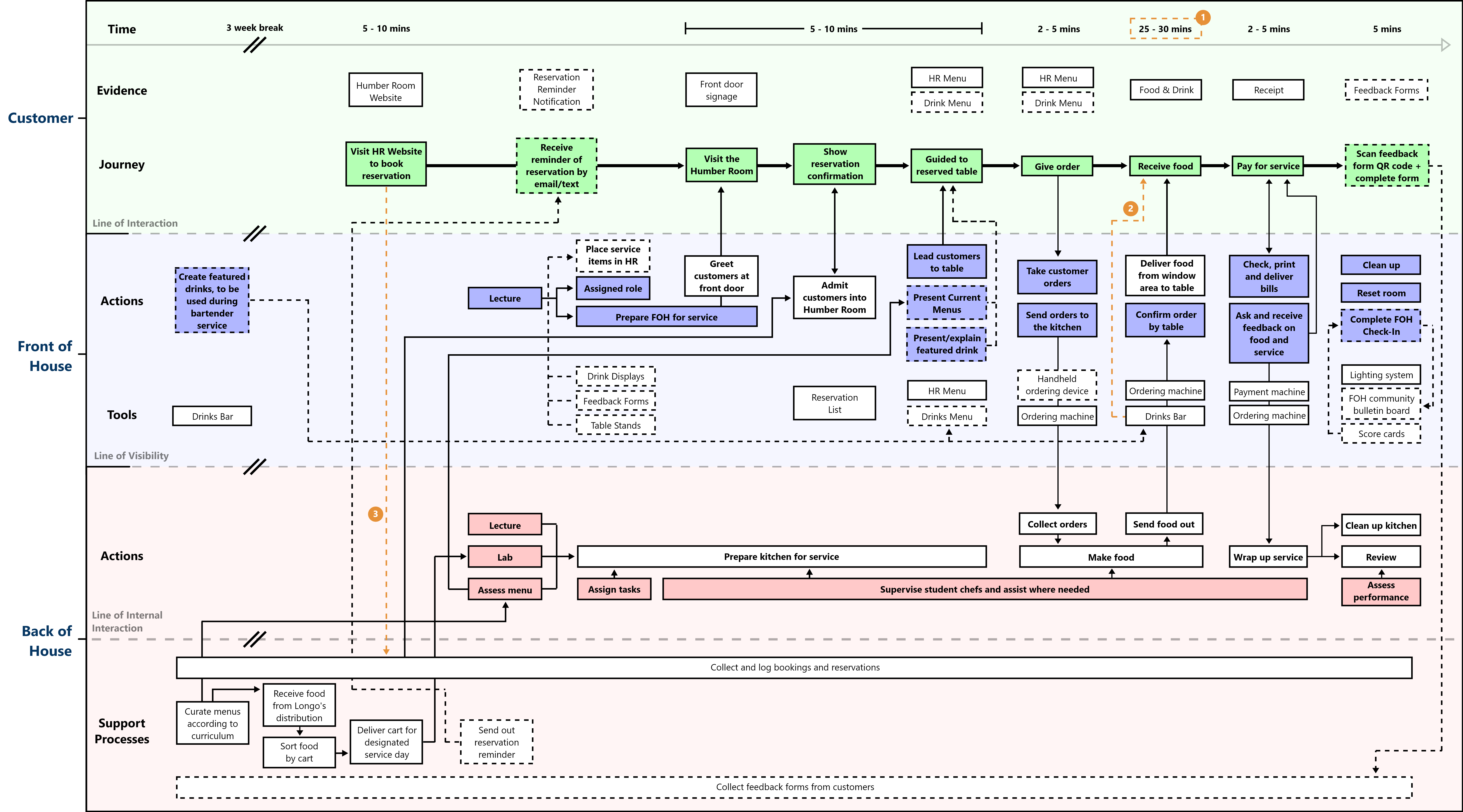
Takeaways
This was an amazing opportunity for us to dive into the world of service design. Not only did it give us the chance to create interventions to solve a problem, it allowed us to explore a service space and discover what can be done differently or better. I feel that I grew a lot as a designer and a problem solver during the course of this project, as I had to shift the way I approached problem solving to a wider perspective. Studying every active member, tool and space within a fast-paced service was an eye-opening experience.
